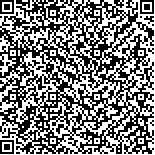李飏安,陈泽健,夏楠,等.单侧穿戴式外骨骼机器人训练对亚急性期脑卒中患者平衡和步行功能的影响[J].中华物理医学与康复杂志,2023,45(2):109-113
扫码阅读全文

|
| 单侧穿戴式外骨骼机器人训练对亚急性期脑卒中患者平衡和步行功能的影响 |
|
| |
| DOI:10.3760/cma.j.issn.0254-1424.2023.02.003 |
| 中文关键词: 外骨骼机器人 脑卒中 下肢运动功能 康复 |
| 英文关键词: Exoskeleton robots Stroke Lower-limb motor ability Rehabilitation |
| 基金项目:国家自然科学基金资助项目(52175268) |
|
| 摘要点击次数: 4302 |
| 全文下载次数: 4738 |
| 中文摘要: |
| 目的 探讨单侧穿戴式外骨骼机器人训练对亚急性期脑卒中偏瘫患者下肢运动功能的影响。 方法 将符合纳入和排除标准的脑卒中患者40例采用随机数字表法分为机器人组和对照组,每组20例。对照组患者采用常规下肢康复训练,机器人组则进行外骨骼辅助下肢运动训练,每日训练40 min,每周训练6 d,连续训练3周。于治疗前和治疗3周后(治疗后)采用功能性步行分级(FAC)、简式Fugl-Meyer运动功能量表下肢部分(FMA-LE)、Berg平衡量表(BBS)和改良Barthel指数量表(MBI)分别评估2组患者的步行能力、下肢功能、平衡能力和日常生活活动能力,并采用坐站转移任务时,双下肢股直肌和胫前肌的健侧与患侧积分肌电值(iEMG)比值来评估2组患者患侧肌肉的激活情况和双侧肌肉激活对称性。 结果 治疗后,2组患者的FAC分级和FMA-LE、BBS、MBI评分较组内治疗前均显著改善(P<0.05);且机器人组治疗后的FAC分级为(1.63±0.72)级,显著优于对照组治疗后(P<0.05)。治疗后,2组患者的股直肌和胫前肌健侧与患侧的iEMG比值较组内治疗前均显著改善(P<0.05),且机器人组胫前肌健侧与患侧的iEMG比值显著优于对照组治疗后(P<0.05)。 结论 单侧穿戴式外骨骼机器人训练可有效地改善亚急性期脑卒中患者的步行、下肢运动、平衡功能和日常生活活动能力,促进患侧下肢肌肉激活及提高双侧下肢肌肉激活对称性。 |
| 英文摘要: |
| Objective To explore any differential effect of training wearing a unilateral exoskeleton on the lower-limb motor function of stroke survivors. Methods Forty stroke survivors were randomly divided into an exoskeleton group (n=20) and a control group (n=20). The control group performed conventional lower extremity exercise training while the exoskeleton group received exoskeleton-assisted lower-limb physical therapy. Each participant received eighteen 40-minute training sessions over three weeks. Before and after the intervention, the walking ability, lower-limb function, balance and ability in the activities of daily living of both groups were evaluated. Integrated electromyography (iEMG) of the rectus femoris and tibialis anterior of both legs was also recorded during sit-to-stand transitions to assess the activation of the affected muscles and the symmetry of bilateral muscle activation. Results After the three weeks, significant improvement was observed in all of the measurements in both groups, but with the exoskeleton group scoring significantly better on average in functional ambulation category grading (1.63±0.72). Both groups′ iEMGs had also improved significantly compared with before treatment, but the exoskeleton group′s average result was by that time significantly better than the control group′s average. Conclusions A wearable exoskeleton can effectively improve the rehabilitation of walking, lower limb movement, balance and skill in the activities of daily living of persons with subacute stroke. It better activates the affected lower limb muscles and improves the symmetry of bilateral lower limb muscle activation. |
|
查看全文
查看/发表评论 下载PDF阅读器 |
| 关闭 |